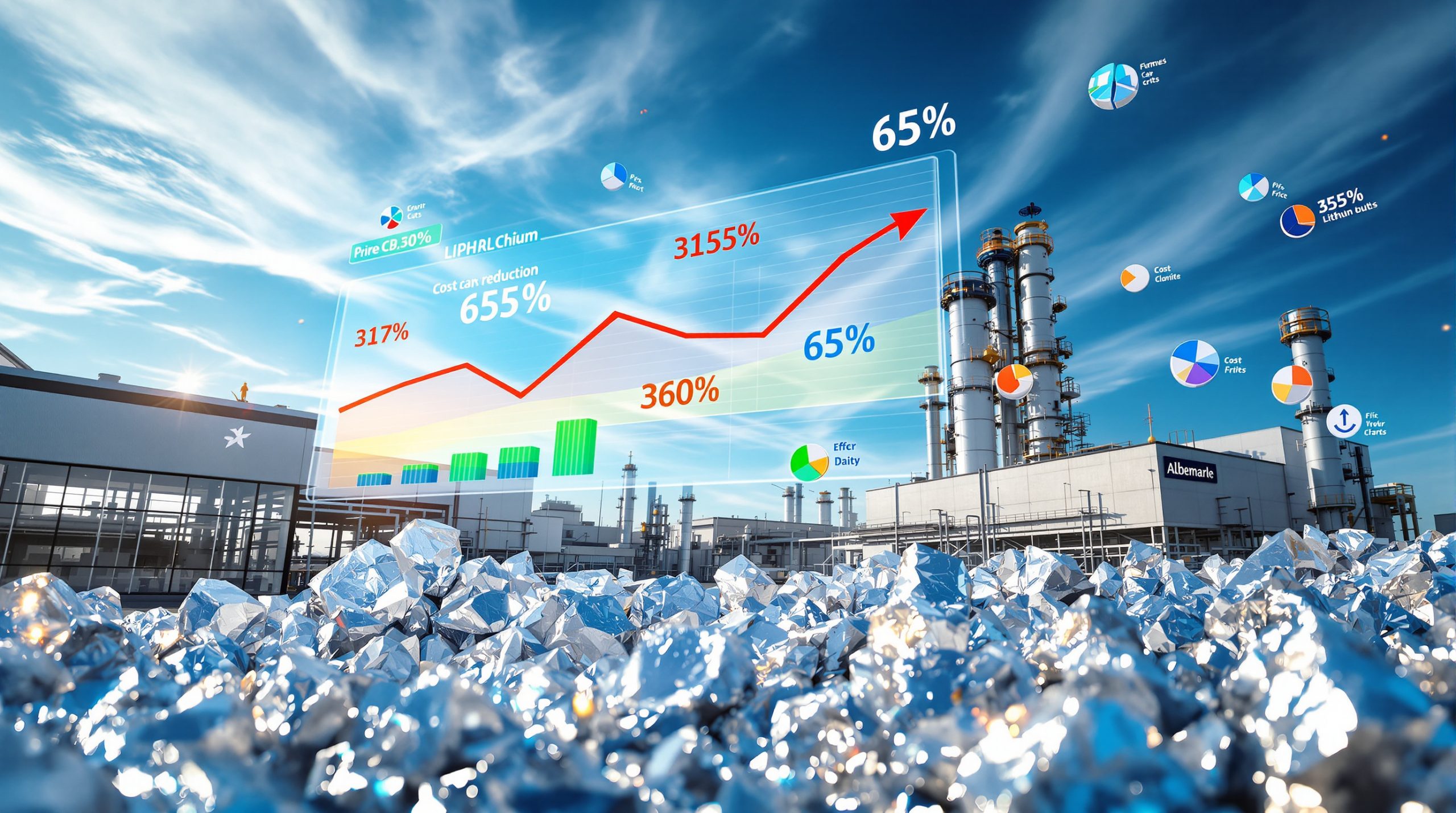DRC Cobalt Export Ban: Market Impact and Global Supply Chain Implications
The Democratic Republic of Congo's recent policy moves regarding cobalt exports have sent ripples through global supply chains, creating both challenges and opportunities across multiple industries. As the world's dominant cobalt producer implements stricter export controls, manufacturers, investors, and governments are scrambling to adapt to a new reality in critical mineral markets.
What is the DRC Cobalt Export Ban?
Recent Extension of the Ban
The Democratic Republic of Congo has extended its export ban on cobalt concentrate by an additional three months, building on the original restrictions implemented in February 2025. This extension, announced in mid-2025, has effectively removed over 100,000 tons of cobalt concentrate from the global mining landscape, triggering immediate price volatility and supply concerns.
The move represents one of the most significant disruptions to the cobalt supply chain in recent years, with particular implications for battery manufacturers and electric vehicle producers who rely heavily on the metal for current battery technologies.
Scope and Enforcement Mechanisms
The ban specifically targets unprocessed cobalt concentrate, allowing only refined or semi-processed materials to leave the country. This strategic distinction aims to shift value-added activities into the DRC while maintaining export volumes of higher-value products.
Implementation occurs through a multi-layered regulatory framework overseen by the DRC mining ministry, with enforcement coordinated between customs authorities and mining inspectors at border checkpoints. The government has established dedicated mineral verification centers at key export hubs to ensure compliance.
According to mining sector analysts, enforcement has been surprisingly effective despite the logistical challenges of monitoring the DRC's extensive borders. Penalties for non-compliance include heavy fines, license suspensions, and potential criminal charges for serious violations.
Why Has the DRC Implemented This Export Ban?
Value Addition Strategy
The primary motivation behind the export ban on cobalt concentrate in Democratic Republic of Congo stems from the government's determination to capture more value from its vast mineral resources. By restricting raw concentrate exports, authorities aim to create economic incentives for building domestic processing facilities, potentially transforming the country from a mere resource extractor to a producer of higher-value materials.
"The DRC loses billions in potential revenue by exporting raw materials instead of processed goods," noted the country's Mining Minister in a recent policy statement. "Our resources must generate prosperity for our people, not just profits for foreign companies."
This value-addition strategy mirrors similar approaches implemented by other resource-rich nations, most notably Indonesia's successful nickel export ban that dramatically increased domestic refining capacity.
Economic Sovereignty Considerations
Beyond immediate economic calculations, the export ban represents a broader assertion of resource sovereignty that's gaining momentum across Africa. The DRC government seeks to reduce its historical dependence on foreign processing facilities—primarily in China—while simultaneously increasing tax revenue through higher-value exports.
The policy aligns with continental initiatives like the African Mining Vision, which advocates for greater mineral beneficiation in Africa. With cobalt prices soaring, the timing provides the DRC with significant leverage to negotiate more favorable terms with international mining companies and processing facilities.
Economists estimate that successful implementation could increase the DRC's GDP by 2-3% annually while creating thousands of skilled jobs in the processing sector—though these projections depend heavily on successful attraction of processing investments.
How Has the Cobalt Market Responded?
Price Movements and Market Volatility
The market reaction to the DRC's export restrictions has been dramatic and immediate. Cobalt futures on China's Wuji exchange surged 9% following the announcement of the ban extension, reaching their highest levels since mid-March 2025.
More tellingly, cobalt sulfate prices in China—the form most directly used in battery manufacturing—have climbed more than 80% since January 2025, signaling severe supply constraints in the battery metals market. This price volatility has been particularly pronounced in spot markets, where premiums for immediate delivery have reached unprecedented levels.
"We're seeing classic supply shock behavior in the cobalt market, with inventory drawdowns, price spikes, and increased trading volumes. The longer the ban persists, the more pronounced these effects will become." — Commodity analyst at a major trading firm
Trading volumes have increased substantially as market participants attempt to hedge against further disruptions, creating additional price pressure and volatility.
Supply Chain Disruptions
The export ban has triggered a cascade of supply chain adjustments as manufacturers scramble to secure material:
- Inventory depletion: Warehouse stocks of cobalt in major trading hubs have declined by approximately 35% since February
- Alternate sourcing: Battery manufacturers are intensifying efforts to source cobalt from Australia, Morocco, and other minor producing regions
- Contract renegotiations: Long-term supply agreements are being revisited as force majeure clauses become relevant
- Stockpiling behavior: Evidence suggests major consumers are accumulating strategic reserves where possible
The disruption has been particularly acute for manufacturers without vertically integrated supply chains or substantial stockpiles. Smaller battery producers report delivery delays of 3-4 weeks for cobalt sulfate, creating production bottlenecks throughout the EV supply chain.
What is the Global Significance of DRC's Cobalt Production?
DRC's Dominance in Global Cobalt Supply
The DRC's central role in global cobalt markets cannot be overstated. The country produces over 80% of the world's cobalt, holding approximately 3.5 million tons of reserves—more than all other countries combined. This concentration creates an inherent vulnerability in global supply chains.
The DRC's cobalt output comes from two primary sources:
- Large-scale industrial mining operations: Dominated by international companies like Glencore and China Molybdenum, these account for roughly 70% of production
- Artisanal and small-scale mining: Contributing approximately 30% of output but associated with significant social and environmental challenges
This production dominance gives the DRC exceptional market power, with few short-term alternatives available to consumers. Even the most aggressive diversification strategies face geological limitations, as cobalt deposits of similar quality and accessibility simply don't exist elsewhere at sufficient scale.
Critical Role in Electric Vehicle Manufacturing
Cobalt remains an essential component in high-performance electric vehicle batteries, particularly in nickel-manganese-cobalt (NMC) chemistries that dominate premium EV segments. The material contributes significantly to energy density and thermal stability—critical factors for vehicle range and safety.
While manufacturers have made progress in reducing cobalt content (from approximately 33% in early NMC111 batteries to around 10% in newer NMC811 formulations), complete elimination remains challenging for applications requiring maximum performance.
The timing of the export ban on cobalt concentrate in Democratic Republic of Congo coincides with rebounding global EV demand, creating particular pressure on battery supply chains. Industry projections suggest cobalt demand for EV applications could grow 30% annually through 2030 despite efficiency improvements—making secure supply increasingly critical.
How Might the Indonesia-DRC Supply Management Talks Impact Markets?
Potential Supply Coordination Framework
Perhaps most concerning for consumers is the news that the DRC is engaged in discussions with Indonesia about managing global mineral supply through possible production quotas. These talks suggest the potential emergence of an OPEC-like arrangement for critical battery minerals.
The framework under discussion reportedly centers on:
- Coordinated production caps to stabilize prices
- Information sharing on processing capacity and technology
- Joint negotiation strategies with major consumers
- Potential expansion to include other producing nations
Indonesia's successful implementation of similar policies for nickel provides a blueprint for such coordination. Since restricting raw nickel exports in 2020, Indonesia has attracted over $30 billion in downstream investments while significantly increasing its capture of nickel value chains.
Market Implications of a Cobalt "Cartel"
The establishment of formal supply coordination between these major producers would represent an unprecedented development in critical mineral markets with far-reaching implications:
- Price stability vs. inflation: While proponents argue coordination could reduce volatility, critics warn of sustained higher prices
- Geopolitical tension: Major consuming nations, particularly in North America and Europe, would likely view such arrangements as threatening energy transition goals
- Accelerated substitution: Higher, more stable prices would accelerate R&D into cobalt-free alternatives
- Investment signals: Exploration and development of cobalt resources outside the DRC would receive stronger financial backing
Economic models suggest that effective coordination could potentially increase cobalt prices by 15-25% over market-clearing levels in the medium term, significantly impacting battery cost structures.
What Are the Implications for Battery Manufacturers?
Supply Chain Adaptation Strategies
Battery manufacturers are responding to the DRC's export restrictions with a multi-faceted approach to ensure continuity of supply:
-
Chemistry modifications: Accelerating the transition to lower-cobalt formulations including:
- High-nickel NMC batteries (reducing cobalt content to <10%)
- LFP (lithium iron phosphate) batteries, which contain no cobalt but offer lower energy density
- Experimental manganese-rich chemistries still in development
-
Geographical diversification: Increasing investment in non-DRC cobalt sources:
- Australia's cobalt-producing mines, including recent cobalt blue expansion projects
- Canada's emerging cobalt belt
- Seafloor nodule exploration projects (though commercially unproven)
-
Recycling expansion: Major manufacturers report increasing cobalt recovery from:
- Production scrap (offering 95%+ recovery rates)
- End-of-life batteries (though volumes remain limited)
- Industrial byproducts containing cobalt
-
Vertical integration: Strategic investments in mining assets to secure supply, including joint ventures with established mining companies and direct minority stakes in development projects
Cost Structure Impacts
The financial implications of cobalt supply constraints are rippling through the battery supply chain:
- Material input costs: Cobalt typically represents 10-15% of cathode costs in NMC batteries
- Margin compression: Battery cell manufacturers report 2-3% reduction in gross margins as input costs rise
- Contract structures: Shifting toward pass-through pricing models to manage volatility
- Competitive landscape: Advantage to manufacturers with secured supply or cobalt-free technologies
Industry analysts estimate that sustained higher cobalt prices could add $300-500 to the battery cost of a typical electric vehicle, potentially slowing adoption rates in price-sensitive segments.
How Does This Connect to Broader Mining Industry Trends?
Resource Nationalism Comparison
The DRC's cobalt export ban represents part of a wider pattern of resource nationalism affecting multiple commodities and regions:
- Mali's gold sector: Barrick Gold's operations have faced significant disruption, with offices temporarily sealed in a tax dispute that has left mines idle since January 2025
- Copper market: Currently trading in backwardation with tight inventory levels, driven partly by similar resource control measures in major producing countries
- Panama: The controversial closure of First Quantum's copper mine demonstrates the willingness of governments to assert control over resources despite economic consequences
- Precious metals: Gold prices have shown sensitivity to these trends, with Bank of America suggesting prices could reach $4,000 per ounce partly due to resource security concerns
These parallel developments suggest a fundamental shift in the relationship between resource-rich nations and international mining companies, with governments increasingly asserting sovereignty over natural resources.
Global Critical Minerals Strategy Shifts
The DRC's actions have accelerated policy responses from major consuming nations:
- Strategic reserves: Several governments are establishing or expanding stockpiles of critical minerals
- Domestic production incentives: Tax benefits, streamlined permitting, and direct subsidies for local mining and processing
- Recycling mandates: Increasingly stringent requirements for battery recycling breakthrough technologies
- Trade relationships: Formation of "mineral security alliances" between consuming and producing nations
These countermeasures reflect growing recognition that battery metals represent national security assets in an electrified economy, fundamentally changing international trade relationships around these commodities.
What Are the Long-Term Outlook and Forecasts?
Market Projections
Industry analysts project several key trends emerging from the current supply disruption:
- Price environment: Cobalt prices likely to remain elevated through 2025-2026 until new processing capacity comes online
- Supply response: Gradual increase in non-DRC production, though limited by geological constraints
- Processing capacity: New refineries under development in Indonesia, Finland, and Canada expected to begin production by late 2026
- Market volatility: Expect 15-20% annual price fluctuations as the market adjusts to new supply realities
The consensus view suggests a tight supply-demand balance for at least the next 24-36 months, with gradual easing as alternative sources develop and processing capacity expands within the DRC.
Technology and Substitution Trends
The cobalt supply shock is accelerating technological adaptation across the battery industry:
- Chemistry innovation: R&D investment in cobalt alternatives has reportedly increased by 40% since the export ban
- Recycling efficiency: New hydrometallurgical processes achieving 98% cobalt recovery rates from battery materials
- Alternative battery technologies: Solid-state batteries with different material requirements progressing toward commercialization
- System-level solutions: Energy management innovations reducing battery size requirements
These developments suggest that while cobalt will remain important, its strategic significance may peak in the next 3-5 years as alternative technologies mature.
FAQ About the DRC Cobalt Export Ban
How does the ban affect electric vehicle production costs?
The export ban's impact on EV production costs varies significantly depending on:
- Battery chemistry: NMC batteries face cost increases of 3-5% at the cell level
- Supply chain integration: Manufacturers with long-term supply contracts experience less immediate impact
- Vehicle segment: Premium vehicles with larger batteries see greater absolute cost increases
- Geographical location: Asian manufacturers with closer ties to DRC material flows report less disruption
Industry analysis suggests a cost impact of $300-500 per vehicle for typical EVs using cobalt-containing batteries. However, most manufacturers are absorbing these costs rather than passing them directly to consumers, viewing the situation as temporary and strategically important to manage.
Will this accelerate the shift to cobalt-free batteries?
The export ban has undoubtedly accelerated the transition toward reduced-cobalt chemistries:
- LFP adoption: Chinese manufacturers report a 30% increase in LFP battery production since February
- R&D timelines: Several major battery manufacturers have compressed development schedules for cobalt-free alternatives by 1-2 years
- Investment patterns: Venture capital funding for cobalt-alternative technologies increased 45% year-over-year
However, cobalt-free technologies currently involve performance trade-offs, particularly in energy density and cold-weather performance. For premium vehicle segments, cobalt-containing batteries will likely remain dominant through at least 2027-2028 despite cost pressures.
How are major EV manufacturers responding to the ban?
Leading electric vehicle manufacturers have implemented multi-faceted responses:
- Tesla: Expanding use of LFP batteries in standard-range models while securing long-term cobalt contracts for premium vehicles
- Volkswagen Group: Accelerating sodium-ion battery research while diversifying cobalt sourcing to include Australian suppliers
- BYD: Leveraging vertical integration with proprietary Blade Battery technology to reduce exposure to cobalt markets
- General Motors: Pursuing joint ventures with recycling companies to recover cobalt from manufacturing scrap and end-of-life batteries
The most resilient manufacturers appear to be those with diversified battery chemistry strategies and established supplier relationships outside traditional DRC supply chains.
What countries might benefit from DRC's export restrictions?
Several nations are positioned to capitalize on the shifting cobalt landscape:
- Indonesia: Rapidly developing as an alternative processing hub with significant Chinese investment in refining capacity
- Australia: Cobalt mining sector attracting increased investment, particularly as a byproduct of nickel operations
- Canada: Cobalt district in Ontario seeing renewed exploration interest and processing development despite recent cobalt discharge fine issues
- Morocco: Expanding cobalt production from existing operations while developing new resources
- Finland: Establishing position as a Western processing hub with advanced environmental standards
These beneficiaries highlight how resource policy in one nation can reshape global supply chains, creating both winners and losers in the transition.
Disclaimer: The cobalt market remains highly volatile, and forecasts regarding price movements, supply responses, and technological developments involve significant uncertainty. Investors and industry participants should conduct thorough due diligence before making decisions based on market projections.
Ready to Get Instant Alerts on Major Mineral Discoveries?
Discover why significant mineral discoveries can lead to exceptional market returns by exploring Discovery Alert's dedicated discoveries page, where their proprietary Discovery IQ model transforms complex mineral data into actionable insights. Begin your 30-day free trial today at discoveryalert.com.au/discoveries/ and position yourself ahead of the market.




